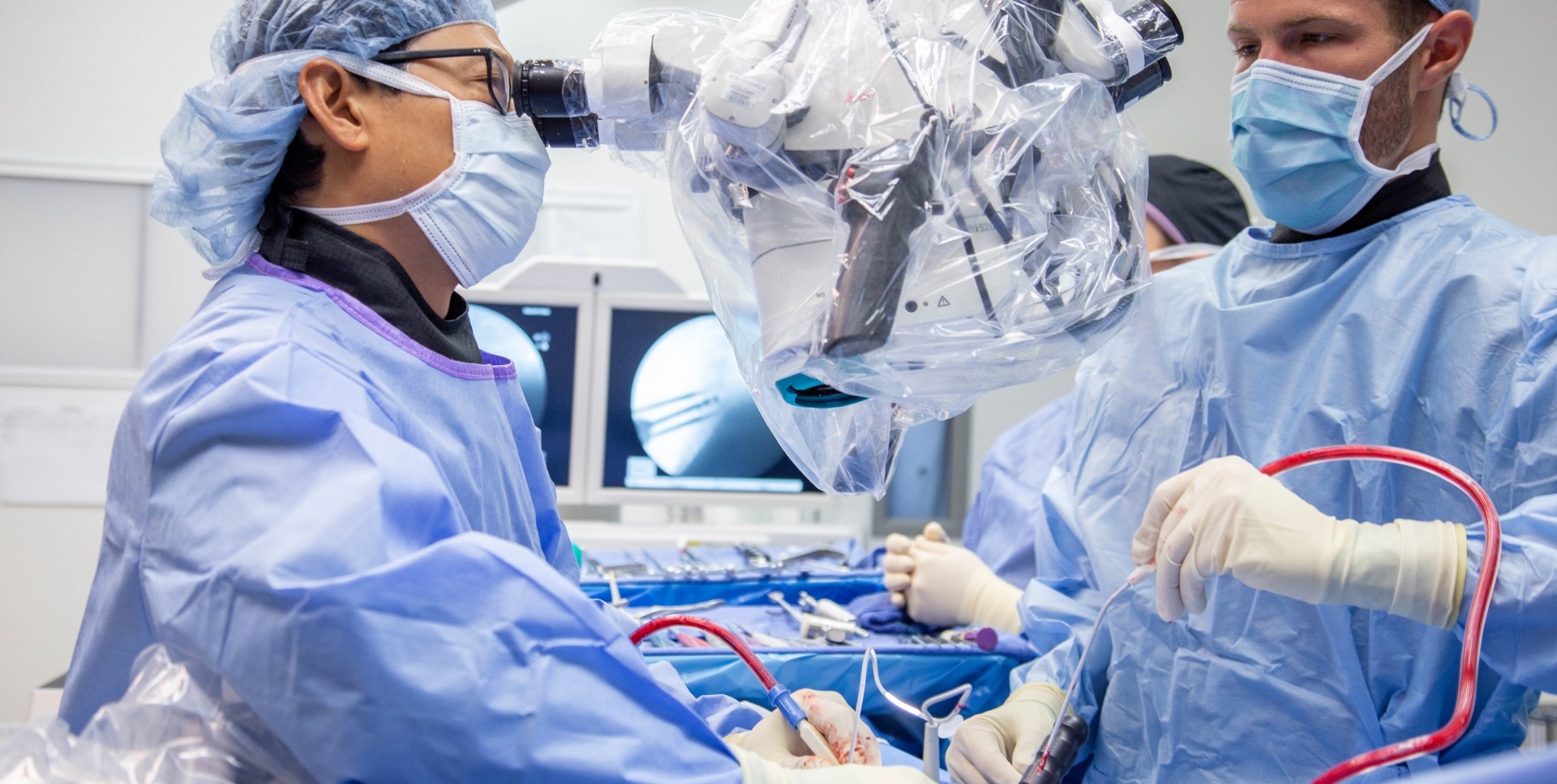Networking with the Best Spine Surgeons in St Louis MO for Comprehensive Treatment
Networking with the Best Spine Surgeons in St Louis MO for Comprehensive Treatment
Blog Article
An Overview of Spine Problems That Usually Cause Surgical Treatments
Spinal column conditions such as herniated discs, spine constriction, and degenerative disc illness frequently demand medical treatments when traditional therapies stop working to minimize consistent signs. Comprehending the subtleties of each condition and the matching surgical alternatives, such as discectomy or spine fusion, is essential for effective monitoring.
Herniated Discs
Although numerous individuals with herniated discs might find alleviation with conservative therapies, surgical treatment becomes a needed consideration when signs and symptoms linger or intensify - best spine surgeons in st louis mo. A herniated disc takes place when the soft inner gel of a spinal disc sticks out with its outer layer, possibly compressing nearby nerves and leading to discomfort, tingling, or weakness in the extremities
Traditional management typically includes physical treatment, pain medicines, and corticosteroid shots, which aim to reduce inflammation and boost function. Nevertheless, in cases where these approaches fail to minimize devastating signs, medical options may be explored.
One of the most usual medical procedure for herniated discs is a discectomy, which includes the removal of the herniated part of the disc to relieve stress on the influenced nerve root. In extra serious situations, spinal fusion might be necessary to maintain the affected vertebrae.
Clients are suggested to talk about the prospective dangers and advantages of surgical procedure with their healthcare company to make an educated choice. Inevitably, the objective of any kind of medical treatment is to recover feature, alleviate pain, and improve overall lifestyle for individuals experiencing herniated discs.
Spinal Stenosis
Spinal stenosis happens when the areas within the back slim, leading to enhanced stress on the spinal cord and nerves. This condition can establish in various regions of the back, including the cervical and back locations, often because of age-related modifications, such as degenerative disc illness, joint inflammation, or enlarging of ligaments.
Patients with spine stenosis may present with symptoms that consist of discomfort, numbness, prickling, or weakness, primarily in the arms or legs. These signs can be aggravated by tasks that involve standing or strolling, usually leading people to seek alleviation via conventional treatments like physical treatment, medications, or epidural steroid shots.
Nevertheless, when these non-surgical treatments fail to supply adequate alleviation, surgical choices might be thought about. Common surgical treatments for back stenosis consist of laminectomy, which involves the elimination of component of the vertebra to minimize stress, and spine combination, which stabilizes the afflicted area.
Spondylolisthesis
Spondylolisthesis happens when one vertebra slides onward over another, causing imbalance of the spine. This condition can result from different aspects, consisting of hereditary defects, injury, or degenerative adjustments in the back. It is most commonly observed in the lumbar region, particularly at the L4-L5 and L5-S1 levels.

Therapy choices vary based on the extent of the slippage and the reference signs and symptoms offered. Traditional procedures, including physical therapy, pain monitoring, and activity adjustment, are usually the first line of defense. When non-surgical methods fail to soothe signs and symptoms or when considerable nerve compression is present, medical intervention might be required. Surgical alternatives can include back combination or decompression procedures, intended at restoring placement and relieving neurological signs. Early diagnosis and ideal administration are essential for optimum outcomes in individuals with spondylolisthesis.
Degenerative Disc Disease

The problem can be diagnosed with a combination of medical examination, imaging researches, and individual history. When these methods stop working to offer appropriate relief, medical treatments might be considered.
Surgical choices for DDD might consist of spine combination or man-made disc replacement, intended at maintaining the influenced segment and relieving pain (best spine this website surgeons in st louis mo). Eventually, the choice of treatment is individualized, taking into consideration the seriousness of the problem, patient wellness, and way of living aspects
Spine Growths

Back growths can occur from numerous elements, consisting of hereditary tendency, ecological impacts, and pre-existing clinical conditions. Clients may present with a range of signs, including localized discomfort, neurological deficiencies, weak point, or changes in bowel and bladder function, depending on the lump's dimension and place.
Surgical treatment may be called for to ease signs, acquire a biopsy, or remove the growth totally. The objective of surgical procedure is often to unwind neural aspects and maintain the spine. Early discovery and intervention are important for maximizing end results in clients with spine tumors.
Verdict
In recap, spine problems such as herniated discs, back constriction, spondylolisthesis, degenerative disc condition, and back tumors frequently require medical treatment because of their possible to create substantial pain and functional disability. While traditional therapies may supply short-lived relief, surgical choices end up being essential when symptoms get worse or persist. Timely diagnosis and intervention play a critical role in restoring function and enhancing the lifestyle for afflicted people, emphasizing the relevance of comprehensive spinal care.

Report this page